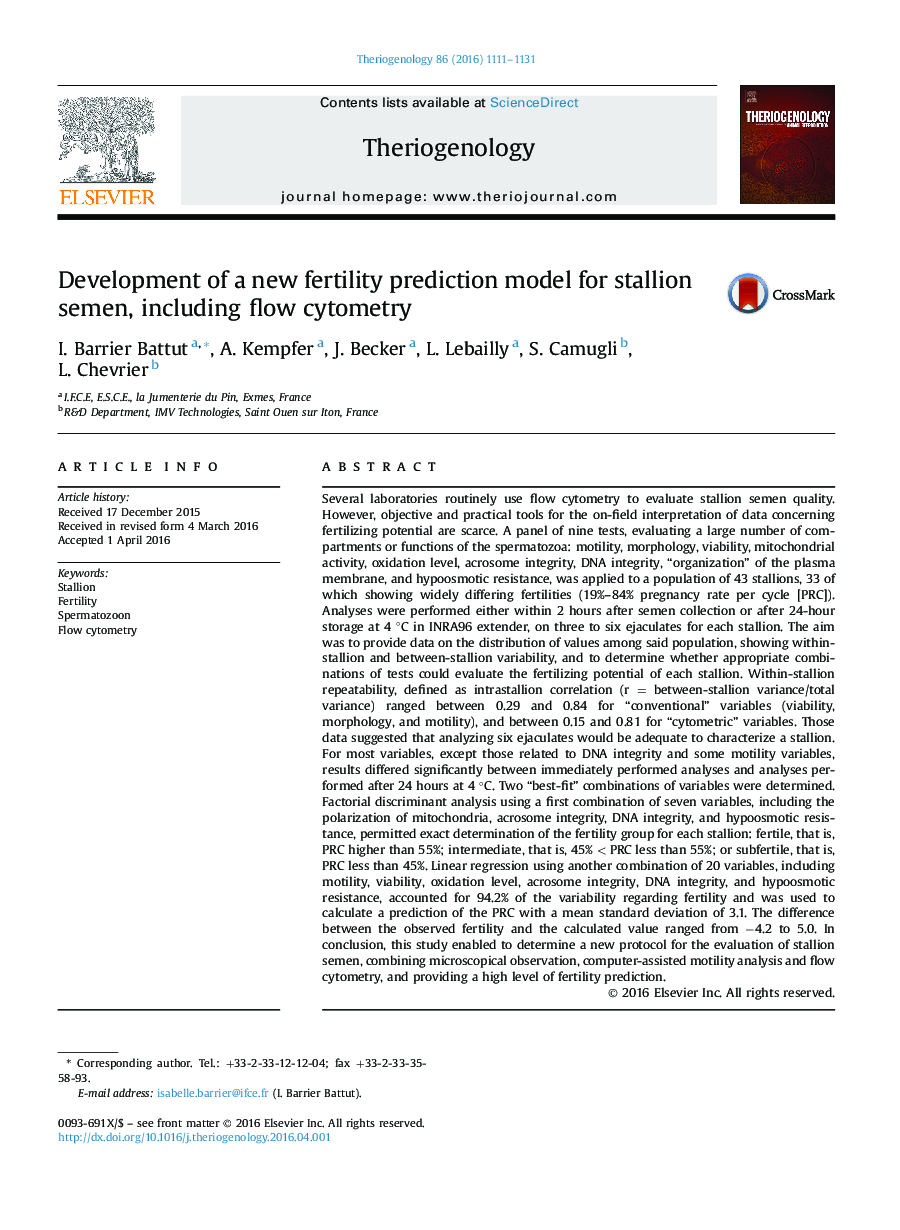| کد مقاله | کد نشریه | سال انتشار | مقاله انگلیسی | نسخه تمام متن |
|---|---|---|---|---|
| 2094736 | 1082049 | 2016 | 21 صفحه PDF | دانلود رایگان |
Several laboratories routinely use flow cytometry to evaluate stallion semen quality. However, objective and practical tools for the on-field interpretation of data concerning fertilizing potential are scarce. A panel of nine tests, evaluating a large number of compartments or functions of the spermatozoa: motility, morphology, viability, mitochondrial activity, oxidation level, acrosome integrity, DNA integrity, “organization” of the plasma membrane, and hypoosmotic resistance, was applied to a population of 43 stallions, 33 of which showing widely differing fertilities (19%–84% pregnancy rate per cycle [PRC]). Analyses were performed either within 2 hours after semen collection or after 24-hour storage at 4 °C in INRA96 extender, on three to six ejaculates for each stallion. The aim was to provide data on the distribution of values among said population, showing within-stallion and between-stallion variability, and to determine whether appropriate combinations of tests could evaluate the fertilizing potential of each stallion. Within-stallion repeatability, defined as intrastallion correlation (r = between-stallion variance/total variance) ranged between 0.29 and 0.84 for “conventional” variables (viability, morphology, and motility), and between 0.15 and 0.81 for “cytometric” variables. Those data suggested that analyzing six ejaculates would be adequate to characterize a stallion. For most variables, except those related to DNA integrity and some motility variables, results differed significantly between immediately performed analyses and analyses performed after 24 hours at 4 °C. Two “best-fit” combinations of variables were determined. Factorial discriminant analysis using a first combination of seven variables, including the polarization of mitochondria, acrosome integrity, DNA integrity, and hypoosmotic resistance, permitted exact determination of the fertility group for each stallion: fertile, that is, PRC higher than 55%; intermediate, that is, 45% < PRC less than 55%; or subfertile, that is, PRC less than 45%. Linear regression using another combination of 20 variables, including motility, viability, oxidation level, acrosome integrity, DNA integrity, and hypoosmotic resistance, accounted for 94.2% of the variability regarding fertility and was used to calculate a prediction of the PRC with a mean standard deviation of 3.1. The difference between the observed fertility and the calculated value ranged from −4.2 to 5.0. In conclusion, this study enabled to determine a new protocol for the evaluation of stallion semen, combining microscopical observation, computer-assisted motility analysis and flow cytometry, and providing a high level of fertility prediction.
Journal: Theriogenology - Volume 86, Issue 4, 1 September 2016, Pages 1111–1131
